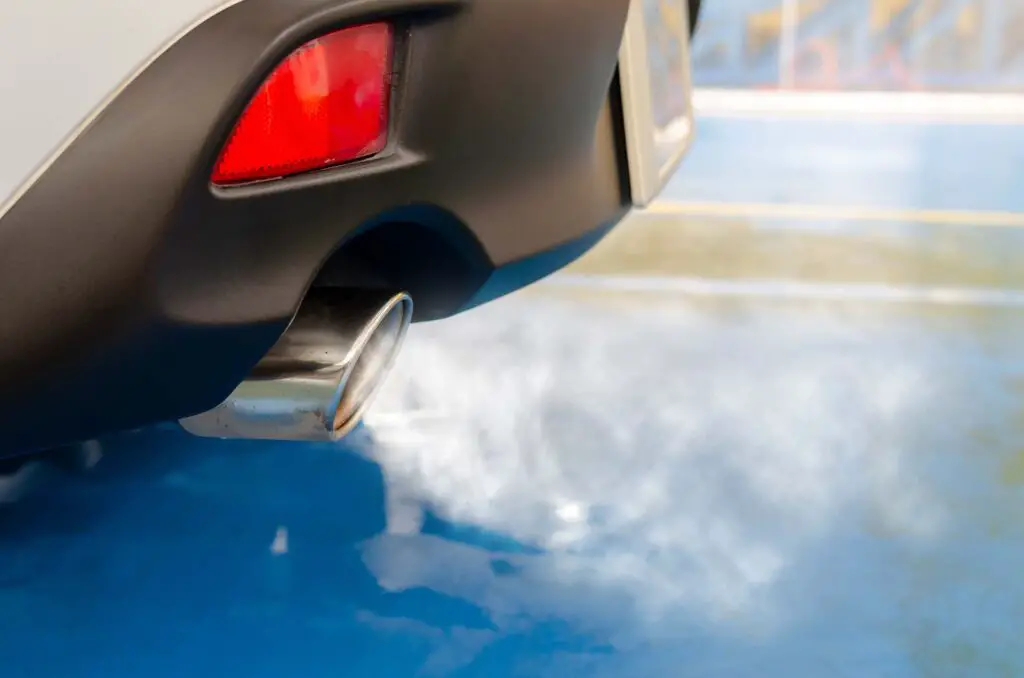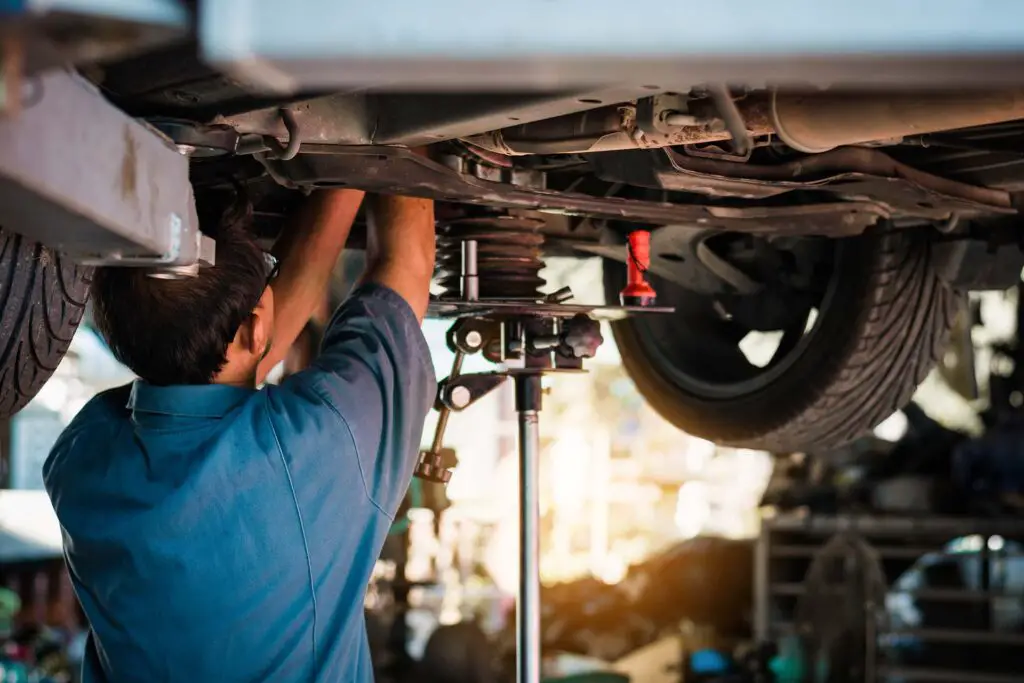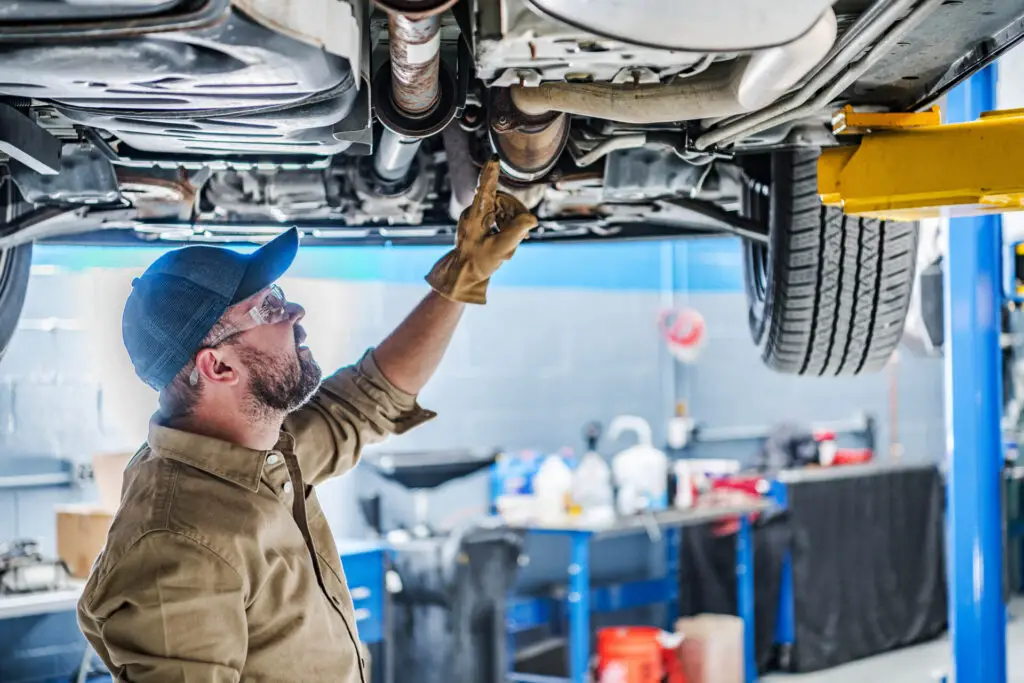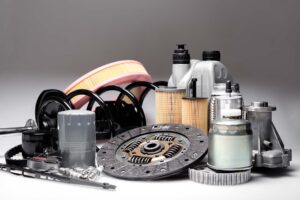Exhaust systems are among the essential parts of a car, and their purpose is to direct burned gasses away from the cabin and the passengers. But have you ever wondered what comes out of a car exhaust system and how harmful it is to the environment?
Our vehicles need many functioning components to operate without issues and to keep ourselves and others on the road safe. Exhaust systems are among those crucial parts, but their main function is to keep the burned and harmful gasses out of the cabin and away from any passengers. If there wasn’t a system like this included, the chemical compounds that keep our cars running would have nowhere to go after they are ignited. Ultimately, they would build up in our cabins and harm us. But what are these fumes made of, and which components handle them?
Exhaust Systems 101
Before we start analyzing carbon emissions and other pollutants that come out of an exhaust system, we should understand what it is, where it’s located, and what its function is. All exhaust systems work through several different components, which work in unison to collect fumes. No matter what type of car it is, each exhaust system produces six different gasses. Three of these gasses are toxic. However, this system not only deters these gasses from the cabin but also works to reduce emissions and make these fumes cleaner. Here are the components that make an exhaust system:
- Exhaust manifold is a part that collects the gasses that come out of cylinders in the combustion chamber and directs them into the pipe. It’s commonly made out of steel or cast iron, specifically bent to increase efficiency.
- Catalytic converter or “cat” uses a catalyst, which is usually a substance such as rhodium, palladium, platinum, or a certain chemical. This part converts harmful fumes from the combustion chamber in the engine into carbon dioxide and water vapor. The components usually last for about 100,000 miles.
- Muffler is there to muffle all the sounds produced by the engine while it maximizes the flow of the exhaust gasses. Better rates of this flow mean better overall performance of the vehicle.
- Resonator is placed either before or after the muffler, and similarly to the muffler, it changes and reduces the sounds coming from the engine. It also works in two ways – it tunes vibrations and improves the effectiveness of the exhaust flow.
- Tailpipe is the final piece of this system, and it comes out of the muffler. It also extends past the rear bumper so it can direct all the exhaust gasses away from the vehicle. Many modern cars feature it as decorative pieces, too, and they have a tailpipe dipped in chrome.
If you’ve ever witnessed a car sneaking up from behind because it was all too quiet, you should know that it happened because its exhaust system works flawlessly.

Why Should You Know What Comes Out of a Car Exhaust
There are several reasons why you should know what comes out of car exhaust. First of all, the emissions from vehicles can have negative impacts on the environment and human health. Some common pollutants include carbon monoxide, nitrogen oxides, and particulate matter, which can contribute to air pollution and climate change. Understanding the composition of car emissions can help individuals make informed decisions about transportation choices and promote the use of cleaner vehicles.
The other reason why you should understand the fumes your car emits is to figure out whether all parts of the exhaust system work flawlessly, as they should. If you notice that your car is literally spitting fumes and puffs from the tailpipe, it can be a warning sign that something is wrong.

What Do These Fumes Consist of Exactly?
The fumes coming from a car’s exhaust system are a mixture of gasses and particles that result from the internal combustion of fuel in the engine. Most of them are already present in our atmosphere naturally. Some of the main components of car exhaust fumes include the following:
- Carbon dioxide (CO2) – it’s technically non-toxic, excessive levels attributed to climate change.
- Carbon monoxide (CO) – a colorless, odorless, and toxic gas produced when fuel does not burn completely.
- Nitrogen oxides (NOx) – a group of pollutants that contribute to smog and acid rain.
- Particulate matter (PM) – tiny particles of solid and liquid matter suspended in the air, including black carbon, ash, and dust.
- Hydrocarbons (HC) – organic compounds containing carbon and hydrogen that can react with nitrogen oxides to form smog.
- Benzene (C6H6) – it appears in gasoline naturally in very small quantities and is exhausted as unburnt fuel.
- Sulfur oxides (SOx) – gasses that can contribute to acid rain and respiratory problems.
Do They Pose a Health Risk?
Car exhaust fumes contain harmful pollutants that can pose a health risk, particularly for people with respiratory problems, children, and the elderly. Prolonged exposure to these fumes can cause a variety of health issues, such as respiratory infections, heart disease, and lung cancer. The presence of these fumes is a particularly big issue in highly populated areas with high levels of traffic and poor air quality.
However, in well-ventilated areas like the big outdoors, they are not generally harmful, as long as they have enough space to dissipate. They are not very likely to build up to dangerous levels, and they will be expelled into the atmosphere.
Signs of Carbon Monoxide Poisoning
If you experience poisoning by Carbon monoxide, you will experience several different symptoms. The acute symptoms include respiratory and eye irritation, confusion, shortness of breath, and headache. The final outcome of severe poisoning might be death, so keep in mind that a concentration of this gas of just 1.28% is deadly and causes death in just 3 minutes.
Watch Out for Benzene Emissions
Benzene emissions can also be extremely dangerous if inhaled directly in a high concentration for a longer period of time. By influencing the bone marrow, it interacts with your body’s cells and stops them from properly replicating. Your body will stop making red blood cells as a result, which might seriously harm your immune system. Long-term benzene exposure has also been linked with leukemia in reliable ways. Unlike carbon monoxide, luckily for us – benzene is particularly easy to notice and detect. In general, its smell is somewhat sickly sweet, so even if it’s at very low levels, it will be immediately recognizable.

The Main Reasons Your Vehicle May Be Exhausting Fumes
Is your car becoming increasingly noisy when you drive it around? You might also notice that it puffs a visible smoke and it’s a sign you should visit your local mechanic. There are several culprits and reasons why your exhaust system is not functioning properly.
You Have Leakage
The most common reason why you might be experiencing different exhaust fumes coming out of your vehicle is leakage. If you have a leak somewhere in the system, these fumes could easily end up in the cabin, where they shouldn’t be. In order to function properly, the whole system should be tight and sealed at all points. This type of issue is usually present in areas with much snow, and the culprit is salt used for the roads. The salt can cause the exhaust seals and pipes to corrode, so you end up with holes through which fumes can escape.
Your Window Seals Are Damaged
If you’re noticing the smell of fumes inside of your cabin that’s not ordinarily there, it may not be a sign of leakage. The smell might be entering your cabin because of the poor window or door seals, and repairing this problem may prevent pollutants from entering. Although the concentration of fumes might not be as high as when you have a leak, they could be potentially harmful.
The Fuel Mixture
To be able to ignite correctly, the fuel your car is using should mix with the oxygen. However, it might happen that the engine isn’t getting these two components in the right amounts, so it’s receiving too much fuel. That might be the reason why you are experiencing such a strong smell. But no matter the symptoms, keep in mind that you should visit your local repair shop as soon as possible.
What to Do if You Notice a Smell
If you notice a strong smell of fumes inside your cabin while you’re driving at night or any other time of day, it is imperative that you pull over immediately, park safely, and turn off the engine. You should also open all the windows and doors for ventilation and leave the car. Call for assistance and wait beside your car. If the smell is faint, it probably doesn’t require an immediate response, but nonetheless, take your car to your local repair shop to have everything checked.
How Can We Reduce These Fumes?
In order to reduce emissions, you can opt for a vehicle that uses alternative fuels, such as electric or hybrid cars. Switching to electric (such as Volkswagen ID.4 or Tesla Model Y) or hybrid vehicles is a significant way to reduce fumes coming from vehicles because these vehicles emit fewer pollutants and reduce dependence on fossil fuels. Regular maintenance, such as oil changes, tune-ups, and proper tire inflation, can significantly reduce emissions from vehicles. Keeping the engine in good condition also ensures that the vehicle runs more efficiently, reducing the number of fumes produced.
Carpooling and public transport are also great options, and you can also make a habit of eco-friendly driving. Simple changes in driving habits, such as avoiding excessive idling, accelerating slowly, and using cruise control on highways, can reduce emissions and improve fuel efficiency. Additionally, properly inflating tires, using the recommended grade of motor oil, and avoiding overloading the vehicle can also have a positive impact on emissions.

Let’s Look at Some Emission Statistics
According to Statista, a smaller vehicle emits 2,040 fewer kilograms of CO2 annually than a pickup vehicle, if we’re looking at average worldwide data. Particularly significant CO2 emissions are also produced by sports automobiles and large SUVs. The following table offers a comparison of the global emissions in 2022 by type of vehicle.
| Type of vehicle | Emission | Gas |
| Pickup trucks | 3,510 | CO2 per year |
| Large SUVs | 2,550 | CO2 per year |
| Sports cars | 2,460 | CO2 per year |
| Luxury cars | 2,385 | CO2 per year |
| Large cars | 1,815 | CO2 per year |
| Medium cars | 1,515 | CO2 per year |
| Small cars | 1,470 | CO2 per year |
Regularly Check Your Vehicle for Issues
Whether you’re an experienced driver or you’re just a beginner, being friendly with your mechanic is just common sense. Both new and used cars should be regularly checked for any problems and to get some fine-tuning. Down the road, you’ll learn how to listen to your car and notice if there is anything amiss. Sensing leakage in your exhaust system or any other issue that occurs with the fumes coming out of the tailpipe is easily noticeable, so the moment you realize you smell them more than usual, get an appointment with your mechanic.








